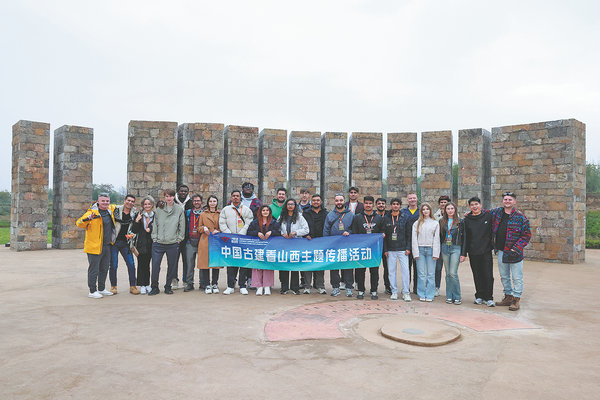

Remarkable findings there include ruins of a city from more than 4,000 years ago — which is believed to be a capital of one of the earliest states in China — and the world's earliest known observatory ruins. These offer tangible proof of a civilization stretching back thousands of years.
The observatory comprised 13 rammed-earth columns arranged in a semicircular shape. Standing at a designated vantage point, viewers could determine the solar terms based on the position of the sun as it rose from the horizon.
"Four millennia ago, they could observe solar events with clay pillars and use a gnomon (column) to calibrate the farming calendar — this is a civilizational miracle for all humankind," said a Pakistani student who used the Chinese name Dawei.
On the final leg of the tour, the group arrived in Yuncheng in southwestern Shanxi, the hometown of Guan Gong.
Guan Gong — which means Lord Guan — is the reverent term of address for Guan Yu, a general in the period spanning the late Eastern Han Dynasty (25-220) and the Three Kingdoms (220-280). He is also known as Guandi, or Emperor Guan.